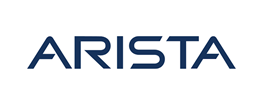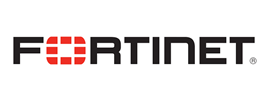- Course overview
- Course details
- Prerequisites
Course overview
About this course
CompTIA Linux+ certification is a popular, highly valued certification. Linux+ training course builds on existing foundation level Linux knowledge and provides you with next-level Linux administration knowledge to further your installation, troubleshooting, and maintenance skills. The course also prepares Linux IT pros for the CompTIA Linux+ exam XK0-004.
Audience profile
- Linux administrators
- Engineers
At course completion
- Install Linux and manage user and group accounts
- Work with Linux permissions and ownership
- Manage kernel, system, and network services
- Work with the Bash shell and shell scripts
- Troubleshoot and secure the Linux operating system
Course details
Modules: Performing Basic Linux Tasks
- Identify the Linux Design Philosophy
- Enter Shell Commands
- Get Help with Linux
Module 2: Managing Users and Groups
- Assume Superuser Privileges
- Create, Modify, and Delete Users
- Create, Modify, and Delete Groups
- Query Users and Groups
- Configure Account Profiles
Module 2: Managing Permissions and Ownership
- Modify File and Directory Permissions
- Modify File and Directory Ownership
- Configure Special Permissions and Attributes
- Troubleshoot Permissions Issues
Module 4: Managing Storage
- Create Partitions
- Manage Logical Volumes
- Mount File Systems
- Manage File Systems
- Navigate the Linux Directory Structure
- Troubleshoot Storage Issues
Module 5: Managing Files and Directories
- Create and Edit Text Files
- Search for Files
- Perform Operations on Files and Directories
- Process Text Files
- Manipulate File Output
Module 6: Managing Kernel Modules
- Explore the Linux Kernel
- Install and Configure Kernel Modules
- Monitor Kernel Modules
Module 7: Managing the Linux Boot Process
- Configure Linux Boot Components
- Configure GRUB 2
Module 8: Managing System Components
- Configure Localization Options
- Configure GUIs
- Manage Services
- Troubleshoot Process Issues
- Troubleshoot CPU and Memory Issues
Module 9: Managing Devices
- Identify the Types of Linux Devices
- Configure Devices
- Monitor Devices
- Troubleshoot Hardware Issues
Module 10: Managing Networking
- Identify TCP/IP Fundamentals
- Identify Linux Server Roles
- Connect to a Network
- Configure DHCP and DNS Client Services
- Configure Cloud and Virtualization Technologies
- Troubleshoot Networking Issues
Module 11: Managing Packages and Software
- Identify Package Managers
- Manage RPM Packages with YUM
- Manage Debian Packages with APT
- Configure Repositories
- Acquire Software
- Build Software from Source Code
- Troubleshoot Software Dependency Issues
Module 12: Securing Linux Systems
- Implement Cybersecurity Best Practices
- Implement Identity and Access Management Methods
- Configure SELinux or AppArmor
- Configure Firewalls
- Implement Logging Services
- Back Up, Restore, and Verify Data
Module 13: Working with Bash Scripts
- Customize the Bash Shell Environment
- Identify Scripting and Programming Fundamentals
- Write and Execute a Simple Bash Script
- Incorporate Control Statements in Bash Scripts
Module 14: Automating Tasks
- Schedule Jobs
- Implement Version Control Using Git
- Identify Orchestration Concepts
Module 15: Installing Linux
- Prepare for Linux Installation
- Perform the Installation
Prerequisites
- Foundation knowledge of the Linux operating system at the level of Introduction to Linux Training and Linux Administration and Support Training
- Experience working with Linux for one year or more
Enquiry
Course : CompTIA Linux+
Enquiry
request for : CompTIA Linux+





















